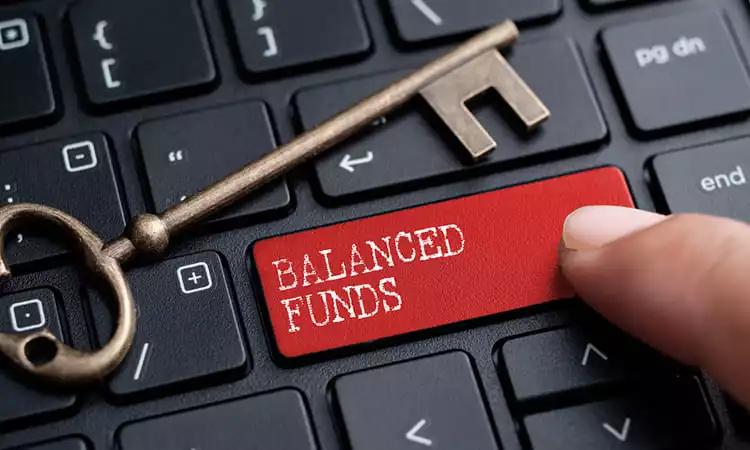What Are Balanced Funds? Are They Safe Investments?

At the two extremes of the mutual fund risk spectrum, we have equity funds and debt funds. However, the investors may want to combine the benefits of both these classes of funds. For example, an investor may look at the wealth creation capacity of equity funds as well as the stability of debt funds. An investor can combine these 2 funds in the portfolio and create a mix. Another way is to directly buy a fund that has balance of equity and debt. Such funds are called balanced funds or hybrid funds.

Broadly there are 4 categories of hybrid or balanced funds. Here is what you need to know about these categories.
Balanced Equity Funds
These are hybrid funds that invest in a mix of equity and debt. They are predominantly invested in equities and a small portion is in debt instruments. These balanced equities actually provide capital appreciation like an equity fund but this growth is partly tempered by the safety and stability of debt. Balanced equity funds normally maintain a minimum mix of 65:35 in favor of equities. This also has a tax implication. When a fund maintains a minimum of 65% in equities, it is classified as an equity fund for tax purposes. That means short-term gains will be taxed at a concessional rate of 15% while long-term gains will be taxed at 10% above the profit threshold of Rs.1 lakh per annum. Such funds typically shunt their equity composition from 65% to 85% of their total portfolio.
Monthly Income Plans (MIPs)
They are better known in the market as MIPs, although the name may be a misnomer. The name MIP leads investors to believe that these funds are assured return funds. However, such funds cannot assure returns and can only pay out of returns earned. MIPs are essentially debt funds predominantly invested in debt instruments. However, they keep an exposure of 15-25% available to invest in equities to enhance their returns over a longer time frame. Most MIPs pay regular income either in the form of dividends or structured as a systematic withdrawal plan (SWP). Normally, retired persons looking at regular income prefer these MIPs. The advantage that they have over traditional debt funds is that the equity component helps them to enhance their returns.
Cash-Futures Arbitrage Funds
This is a balanced fund that does not have any exposure to debt but replicates a debt instrument. Let us understand how! An arbitrage fund capitalizes on the premium that the stock futures enjoy over the spot price. In an arbitrage fund, the fund manager will buy a stock in the cash market and sell equivalent futures. For example, RIL has a lot size of 1000 shares. If you buy Reliance in the spot market at Rs.950 and sell the July 2018 Reliance Futures at Rs.958, then the spread of Rs.8 (958-950) becomes your assured return. That is because, on the F&O expiry date, the cash price and the futures price will converge. So the spread of Rs.8 will become the arbitrageurâs assured income. What is that in percentage terms? Return of Rs.8 on an investment of Rs.950 will roughly be 0.84% per month or an annualized yield of 10.56%. That is a very attractive assured return and is better than most debt funds. Since an arbitrage fund holds over 65% in equities, it is classified as an equity fund for tax purposes, which enhances post-tax returns.
Dynamic Funds
Dynamic funds also mix equities and debt but the discretion is with the fund manager. If the fund manager is very positive on equities then 80% of the portfolios can be moved to equities. Similarly, 80% of the portfolio can also be moved to debt if the situation justifies. Basically, there is a huge discretion available with the fund manager.
Are Balanced Funds Really Safe?
- To begin with, balanced funds are definitely riskier that debt funds but less risky than equity funds. You must also look at the four types of hybrids on the risk scale.
- At the highest level of risk are dynamic funds because they run asset volatility risk and risk of fund manager discretion.
- The second level of risk is seen in Balanced Equity Funds. With a predominant equity component, they carry market risk but can create wealth over the long run.
- Third on the pecking order of risk are arbitrage funds. While the arbitrage spread appears to be a simple game, spreads can dangerously contract at times.
- The safest among the balanced funds are the MIPs as they consistently maintain high exposure to debt. They are likely to be the most stable among hybrid funds.
Disclaimer : The information in this blog is for general purposes only and may change without notice. It does not constitute legal, tax, or financial advice. Readers should seek professional guidance and make decisions at their own discretion. IIFL Finance is not liable for any reliance on this content. Read more



